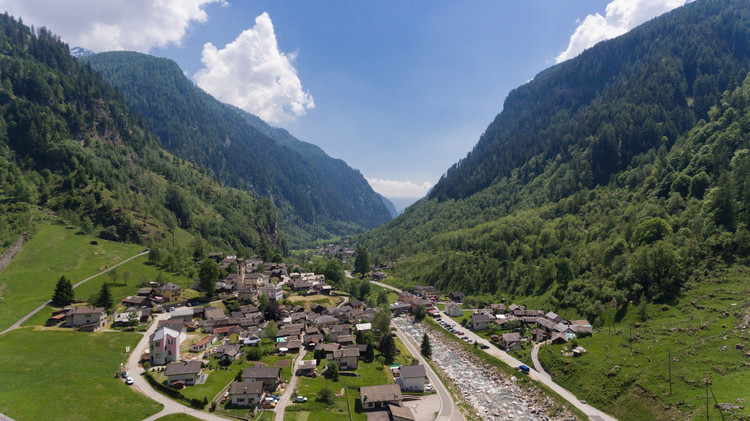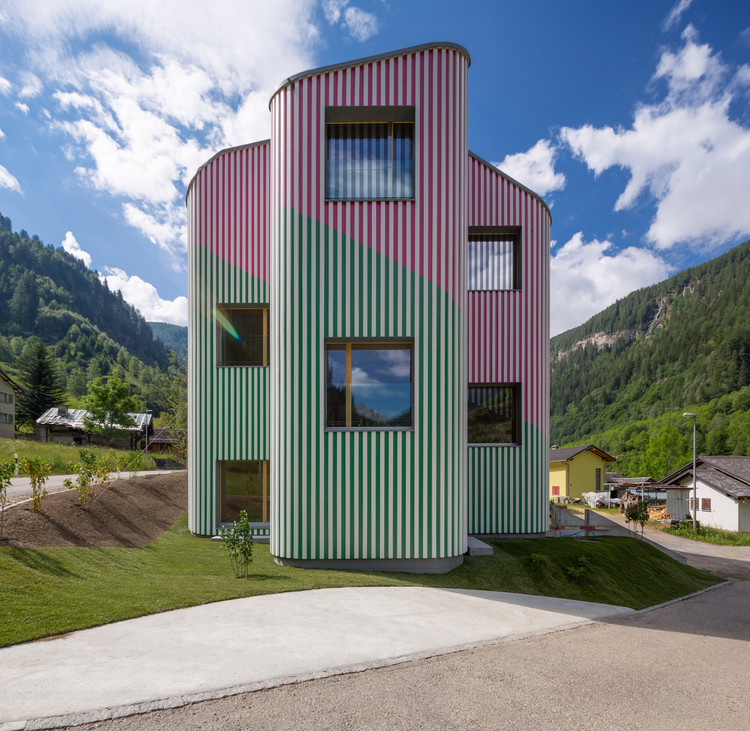
-
Architects: Daniel Buren, Davide Macullo
- Area: 300 m²
- Year: 2017
-
Photographs:Alexandre Zveiger
-
Manufacturers: Alias, La Deca Cucine Sagl
-
Lead Architects: Davide Macullo

Swiss House Rossa represents the constant commitment to build with respect for the places we inhabit and to make every effort in helping our understanding of civilisation. This is an opera that lies on the cusp between art and architecture, a living sculpture. Alongside its primary role in protecting man from the elements, it is an architecture that needs art to complete it.

The Calanca valley, when you go there, you forget the things that are known to you. In reality, the journey there is short, but it is a trip of a lifetime. Once inside, the valley closes behind you, and beyond opens the door to your dreams.

Rocky walls, forests, undulating soft fields; the ceaseless work of centuries of men and women; it warms us. The rocks tell us the story of the birth of the earth and how much it has had to move to give us this blessed place.

Rossa is a place of memory where civilisation comes from simplicity. Our task is to continue this art of love for this land through humble but enduring gestures. This village in the Swiss Alps at an altitude of 1100 meters, lies almost at the end of the valley, where the powerful force of nature expresses itself, its presence revealing to us our measure in the world. Expresses itself, its presence revealing to us our measure in the world.

Building in this context means taking cue from the signs of the past in their essence, following the peace of a place that catalyses energies difficult to describe.

Nothing here is new. This physical and spiritual place still resists commoditisation and each object placed in it is consumed and amalgamated with history and nature.

Swiss House is placed spatially along a line of volumes of patrician houses that form an agglomeration around the village church. The new volume emphasises this axis both physically and conceptually.


The cross in vertical projection, the rounding of the edges and the simple torsion of the roof make it dynamic and reinterprets the archetype of the house. Just like the typical house as designed by children: two vertical lines, two diagonal line for the roof, holes for letting in light. This is the same thing, but completely different.



It is the archetype re-invented to show that the reasons for building are inventive and inexhaustible and that buildings are our public art. Just as our surrounding nature is not always the same, but is in constant flux, changing and taking on new meanings depending on how we observe it.

It is an enclosure that defines a dynamic space. The points of view and the light penetrations work on the perception of time, notably from the absence of the instantaneous speed of the sliding images we have grown used to. It is an unbroken line of emotions. Each aperture is calibrated and oriented towards selected views of the surrounding landscape. Each point is different and every breath of the landscape suggests different things.






























